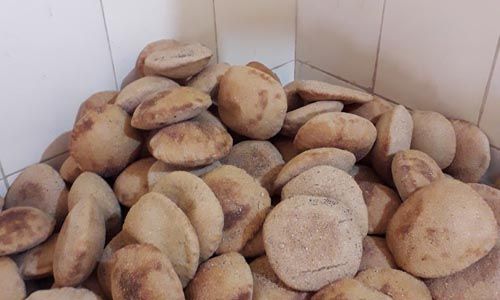No sooner TTAG celebrated the GST reduction it went for the small guys, the owners of unlicensed guest houses. Will it take on OYO and Airbnb? Of course not. In comparison to Goa’s miserable performance at the PATA awards, Kerala won three PATA golds. Of the 15,500 RTMs which has become the mainstay of its tourism policy, 13,500 units are led by women. In contrast Goa has become better known for its sex tourism.
 October 11, 2019
October 11, 2019
Lion Roars
It happened, finally. The Times of India recognized that Goa’s booming tourism industry is simply and purely driven by cheap booze, sex and drugs. It even coined words to describe it: 'adult entertainment'. These are the chronic manifestations of the disease and there is no cure for it. Next, could the same newspaper or the Herald take a call on whether the tourism industry has overall made Goans rich or is it largely non-Goans and the big hotel groups that occupy virtually all of Goa's coastline, that have benefitted; of which there is little need for real evidence. Just look around you. I have been saying all the above for years. I can also assure you that is not the case in entire Kerala, Mahablipuram (Tamil Nadu), Karnataka, Andhra Pradesh and Telengana where locals dominate the tourism industry; with the exception of course of the omnipresent big hotel groups.
But the circus goes on. And circus it is. Soon after the GST reduction, which TTAG took credit for happening. It was always going to happen because the GST was ridiculously high and definitely detrimental; TTAG helped itself to a piece of the pie. Here’s what transpired. After some hard lobbying through the ever obliging media, TTAG now gets to send a stakeholder (aka rich hotelier) on junkets abroad paid for by your tax money. Which means while we spend ten of crores on our rich MLAs to buy homes and car, most of them have health problems which is why we spend again tens of crores on their health bills (according to the Herald revelations, Dilip Parulekar billed the government for Rs 33, 44,094); we now have to pay for the holiday of a hotelier.
We rule, nobody else does
No sooner TTAG celebrated the GST reduction it went hammer and tongs for the small guys, the owners of unlicensed guest houses; and is conducting a survey to find out how many there are. But will it take on OYO and Airbnb? Of course not.
While Kerala continues to hog Gold.
In comparison to Goa’s miserable performance at the PATA awards, Kerala won three PATA (Pacific Asia Travel Association) golds. The Kerala Tourism website had 10 million visits during FY 2018-19 and is one among the top 10 tourism websites in Asia. But the one achievement it will be proudest about is the gold for an ethnic food restaurant run by women at Kumarakom under its Responsible Tourism Mission (RTM) (see picture of Samridhi Ethnic Food Restaurant). The two other gold awards were for an advertisement campaign of Kerala Tourism called 'Come Out and Play' and for its website (www.keralatourism.org).
Of the 15,500 RTMs which has become the mainstay of its tourism policy and initiatives, 13,500 units are led by women. In contrast, Goa has become better known for its sex tourism (see lead article ‘Goa's Big Bazaar for Sex -1’). The 'Come Out and Play' campaign is an invitation to India to come out of the routine 'everydayness' of urban spaces - and the isolation that gadgets induce - to connect with each other and nature.
On offer are options like trekking, Ayurvedic massage, river rafting, yoga lessons, visiting spice plantations, learning the basics of Kerala cuisine, climbing a coconut tree, and sailing on a houseboat. Its website hosts almost one lakh web pages and major sections are available in 23 languages, competing with websites of countries like Hong Kong, New Zealand, South Korea, and Australia for higher ranking. By comparison, Goa’s tourism officials prefer to go on junkets abroad spending crores of taxpayers money. Last year, Kerala won two PATA Gold, one for its Yalla Kerala print media campaign in the Gulf countries, the other for a poster it had made for the third edition of the Kochi-Muziris Biennale (KMB).



